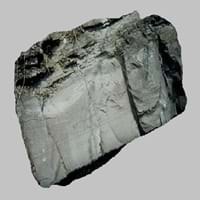Turbidite and Tuff
Definition
Definition
A sedimentary rock, deposit of a submarine turbidity currents and are composed of layered particles
Tuff is a type of rock made of volcanic ash ejected from a vent during a volcanic eruption
History
Origin
European Foreland Basins
Italy
Discoverer
Arnold H. Bouma
Unknown
Etymology
From Medieval Latin turbiditas, from Latin turbidus (turbid). Turbidity current is from 1939
From a Latin word tophous then in Italian tufo and finally tuff
Class
Sedimentary Rocks
Igneous Rocks
Sub-Class
Durable Rock, Soft Rock
Durable Rock, Medium Hardness Rock
Family
Group
Not Applicable
Volcanic
Other Categories
Coarse Grained Rock, Fine Grained Rock, Opaque Rock
Fine Grained Rock, Opaque Rock
Texture
Texture
Mud-rich, Sandy
Clastic, Pyroclastic
Color
Black, Brown, Colourless, Green, Grey, Pink
Brown, Grey, Yellow
Maintenance
Less
More
Durability
Durable
Durable
Water Resistant
Yes
Yes
Scratch Resistant
Yes
Yes
Stain Resistant
No
No
Wind Resistant
Yes
No
Acid Resistant
No
No
Appearance
Dull and Banded
Dull, Vesicular and Foilated
Uses
Architecture
Interior Uses
Bathrooms, Countertops, Decorative Aggregates, Flooring, Homes, Interior Decoration
Decorative Aggregates, Entryways, Flooring, Homes, Interior Decoration
Exterior Uses
As Building Stone, As Facing Stone, Paving Stone, Garden Decoration
As Building Stone, As Facing Stone, Garden Decoration, Office Buildings, Paving Stone
Other Architectural Uses
Curbing
Curbing
Industry
Construction Industry
As Dimension Stone, Cement Manufacture, Construction Aggregate, for Road Aggregate, Making natural cement
Building houses or walls, Construction Aggregate
Medical Industry
Not Yet Used
Not Yet Used
Antiquity Uses
Artifacts, Monuments, Sculpture
Artifacts, Monuments, Sculpture, Small Figurines
Other Uses
Commercial Uses
Cemetery Markers, Creating Artwork
Creating Artwork
Types
Types
Not Available
Welded tuff, Rhyolitic tuff, Basaltic tuff, Trachyte tuff, Andesitic tuff and Ignimbrite.
Features
High silica content, Host Rock for Lead
Always found as volcanic pipes over deep continental crust
Archaeological Significance
Monuments
Used
Used
Famous Monuments
Data Not Available
Easter Island in the Polynesian Triangle, Pacific Ocean
Sculpture
Used
Used
Famous Sculptures
Data Not Available
Data Not Available
Pictographs
Used
Used
Petroglyphs
Used
Used
Figurines
Used
Used
Fossils
Present
Absent
Formation
Formation
Turbidite is a type of sedimentary rock formed when a river carries or transports pieces of broken rock as it flows. These particles then settle down and are subjected to high temperature and pressures hence forming Turbidite.
Tuff is formed when large masses of ash and sand which are mixed with hot gases are ejected by a volcano and avalanche rapidly down its slopes.
Composition
Mineral Content
Coesite, Quartz, Sand
Calcite, Chlorite
Compound Content
CaO, Carbon Dioxide, MgO
Hydrogen Sulfide, Sulfur Dioxide
Transformation
Metamorphism
No
Yes
Types of Metamorphism
Not Applicable
Burial Metamorphism, Cataclastic Metamorphism, Contact Metamorphism, Hydrothermal Metamorphism, Impact Metamorphism, Regional Metamorphism
Weathering
Yes
Yes
Types of Weathering
Biological Weathering, Chemical Weathering, Mechanical Weathering
Biological Weathering, Chemical Weathering, Mechanical Weathering
Erosion
Yes
Yes
Types of Erosion
Chemical Erosion, Coastal Erosion, Sea Erosion, Water Erosion, Wind Erosion
Chemical Erosion, Coastal Erosion, Glacier Erosion, Sea Erosion, Water Erosion, Wind Erosion
Properties
Physical Properties
Hardness
3
4-6
Grain Size
Fine to Coarse Grained
Fine Grained
Fracture
Splintery
Uneven
Streak
White, Greenish White or Grey
White
Porosity
Very Less Porous
Highly Porous
Luster
Metallic
Vitreous to Dull
Compressive Strength
200.00 N/mm2
10
243.80 N/mm2
5
Cleavage
Disjunctive
Not Available
Toughness
2.4
Not Available
Specific Gravity
2.46-2.73
2.73
Transparency
Opaque
Opaque
Density
1.6-2.5 g/cm3
1-1.8 g/cm3
Thermal Properties
Specific Heat Capacity
0.92 kJ/Kg K
10
0.20 kJ/Kg K
25
Resistance
Heat Resistant
Heat Resistant, Impact Resistant, Pressure Resistant, Wear Resistant
Reserves
Deposits in Eastern Continents
Asia
Not Yet Found
Afghanistan, Armenia, Azerbaijan, Burma, Cambodia, China, India, Indonesia, Iran, Japan, Malaysia, Mongolia, Nepal, North Korea, Pakistan, Saudi Arabia, Syria, Taiwan, Thailand, Turkey, Vietnam, Yemen
Africa
Western Africa
Cameroon, Cape Verde, Eritrea, Ethiopia, Kenya, Libya, Madagascar, Nigeria, Rwanda, South Africa, Sudan, Uganda
Europe
Austria, Belarus, Romania, Switzerland, United Kingdom
France, Georgia, Germany, Greece, Iceland, Italy, Netherlands, Poland, Portugal, Spain, United Kingdom
Others
Not Yet Found
Antarctica, Hawaii Islands
Deposits in Western Continents
North America
Canada, USA
Canada, Costa Rica, Panama, USA
South America
Brazil, Colombia
Argentina, Bolivia, Brazil, Chile, Ecuador, Paraguay
Deposits in Oceania Continent
Australia
New Zealand, Western Australia
Central Australia, Western Australia
All about Turbidite and Tuff Properties
Know all about Turbidite and Tuff properties here. All properties of rocks are important as they define the type of rock and its application. Turbidite belongs to Sedimentary Rocks while Tuff belongs to Igneous Rocks.Texture of Turbidite is Mud-rich, Sandy whereas that of Tuff is Clastic, Pyroclastic. Turbidite appears Dull and Banded and Tuff appears Dull, Vesicular and Foilated. The luster of Turbidite is metallic while that of Tuff is vitreous to dull. Turbidite is available in black, brown, colourless, green, grey, pink colors whereas Tuff is available in brown, grey, yellow colors. The commercial uses of Turbidite and Tuff are cemetery markers, creating artwork.
|
||
|
||
|










